

 |
Random files - Military aircraft gallery |
 |
|
 |

arado ar81524 viewsThe chief rival to the legendary Ju 87, the V3 was superior in most respects but the Ju 87 was chosen primarily due to the fact that the Ju 87 was a monoplane.
|
|
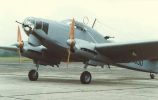
Focke-Wulf Fw 58706 viewsThe Focke-Wulf Fw 58 was an excellent aircraft. It made its first flight in 1935 as a six-seat light transport. The prototype, Fw 58 V1, first flew in 1935 as a six-seater transport. The second prototype was in military guise, having machine guns fitted both in the nose and dorsally. The next production run was of the Fw 58B, some of which were bombers and some others being fitted with floats - the Fw 58BW. The main production model was the Fw 58C, a light transport. Eight were delivered to Lufthansa during 1938/9 as commercial transports.
Large numbers of bothe Fw 58Bs and Fw 58Cs were used by the Luftwaffe being used for light transport, communications and ambulance duties in large numbers even, on occasions, for crop spraying.
|
|

Focke-Wulf 187373 viewsThis plane was excellent when it appeared, but ignored in favor of the Bf110. The pilots in Norway were enthusiastic about its potential and demanded quantity production, but instead they were ordered to give the planes back to Focke-Wulf because they were only in inofficial use. Some Fw187 were also used in the aerial shooting school in Vaerlose, Denmark.
In the facility defense role, they shot down several aircraft. Remarkable was the great maneuvrability; the Rechlin test pilot Heinrich Beauvais was of the opinion that it circled comparable to the Bf109 and rolled only slightly slower than the Bf109, while spped and range were superior. But the disastrous (but good-looking) Me210 and Me410 design was preferred by the air ministry
|
|

Messerschmitt Me 262 Schwalbe430 viewsThe Me 262A-1a "Schwalbe" ("Swallow") was the first production model of the Me 262. It was produced with four Mk 108 30mm cannon mounted in the nose, in its role as an interceptor, a role that it performed with great promise. it came into the battle far too late, when the Allied air forces had reached formidable capacity; secondly, its engines were a constant source of trouble, frequently failing after no more than 12 hours; the Me 262A-2a "Sturmvogel" ("Stormbird") was reconfigured to carry two 550lb bombs, still retaining the four cannon. A further refinement, Me 262A-2a/U1 had two of the cannon removed to provide space for a bomb-aiming device, and Me 262A-2/U2 carried a prone bombardier in the nose section. Thus, for much of the aircraft's brief combat life, it was used against the wrong type of targets, with even less effect than if it had been used as an interceptor.
|
|

Avro Manchester394 viewsThe Avro Manchester had a relatively brief service career, from November 1940 to June 1942, largely because of problems associated by the unreliability and eventual lack of power shown by the Rolls-Royce Vulture I engines with which it was fitted. The bomber could, however, maintain height on one engine, and in one case an aircraft flew 600 miles from Berlin to its base in England after having had an engine knocked out by gunfire in addition to other extensive damage. In addition to a 10,350 pound bomb load in cavernous bomb-bay nearly half the length of the fuselage, the armament consisted of eight .303-inch machine-guns: two in the nose, two in a dorsal turret, and four in a turret in the tail.
Though unsuccessful the Avro Manchester design demonstrated sufficient promise to warrant further modification.
|
|

Avro 685 York494 viewsA transport development of the Lancaster, with a bigger fuselage of rectangular cross-section and an additional tailfin. Production during WWII was limited because it was agreed that the US would supply transport aircraft.
|
|
|
 |

 |
Last additions - Military aircraft gallery |
 |
|
 |
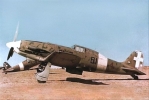
Macchi C.202 Folgore1438 viewswas a World War II fighter aircraft built by Macchi Aeronautica and operated by the Regia Aeronautica (RA; Royal (Italian) Air Force). Macchi aircraft designed by Mario Castoldi received the "C" letter in their model designation, hence the Folgore is referred to as the MC.202. Considered one of the most beautiful fighters to fly with wartime Axis forces, the C.202 was a development of the earlier C.200 Saetta, with a more powerful German Daimler-Benz DB 601 engine and with an extremely streamlined fuselage.[1] Undoubtedly the best wartime fighter to serve in large numbers with the Regia Aeronautica,[2] the Folgore operated on all fronts.[3]
The Folgore went into service with the Regia Aeronautica in July 1941 and immediately proved to be an effective and deadly dogfighter.[4][5] The Australian ace Clive Caldwell, who fought a wide variety of German, Italian and Japanese fighters during 1941–45, later stated that the C.202 was "one of the best and most undervalued of fighters".Jan 12, 2011
|
|
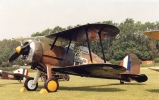
Gloster Gladiator1034 viewsThe Gloster Gladiator (or Gloster SS.37) was a British-built biplane fighter. It was used by the Royal Air Force (RAF) and the Royal Navy (as the Sea Gladiator variant) and was exported to a number of other air forces during the late 1930s. It was the RAF's last biplane fighter aircraft and was rendered obsolete by newer monoplane designs even as it was being introduced. Though often pitted against more formidable foes during the early days of the Second World War, it acquitted itself reasonably well in combat.
The Gladiator saw action in almost all theatres during the Second World War, with a large number of air forces, some of them on the Axis side. The RAF used it in France, Norway, Greece, the defence of Malta, and the brief Anglo-Iraqi War (in which the Royal Iraqi Air Force was similarly equipped). Other countries deploying the Gladiator included China against Japan, beginning in 1938; Finland (along with Swedish volunteers) in the Winter War and the Continuation War; and Norway, Belgium, and GreeceJan 12, 2011
|
|
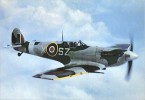
Supermarine Spitfire Mk Vb959 viewsThe Mk V was produced in greater numbers than any other single mark of Spitfire. It was the main version of the fighter during 1941, replacing the Mk I and II in service in time to take part in the first British counterattacks over France. During the summer of 1941 it held an advantage over the Bf 109, but in September 1941 the Fw 190 made its operation debut, and the Mk V found itself outclassed. Despite this, it remained the main RAF fighter until the summer of 1942, and the low level LF.Mk V remained in use into 1944.Jan 10, 2011
|
|
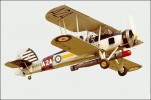
Fairey Albacore1037 viewsThe Fairey Albacore is a single-engine carrier-borne biplane torpedo bomber built by Fairey Aviation between 1939 and 1943 for the Fleet Air Arm. It had a three-man crew and was designed for spotting and reconnaissance as well as delivering bombs and torpedoes. The Albacore, popularly known as the "Applecore", was conceived as a replacement for the ageing Fairey Swordfish, which had entered service in 1936. However, the Albacore served with the Swordfish and was retired before it, being replaced by the monoplane Fairey Barracuda torpedo bomber.
The Albacore prototypes were built to meet Specification S.41/36 for a three-seat TSR (torpedo/spotter/reconnaissance) for the FAA. The first of two prototypes flew on December 12 1938 and production of the first batch of 98 aircraft began in 1939. Early Albacores were fitted with the Bristol Taurus II engine and those built later received the more powerful Taurus XII.
No. 826 Squadron FAA was specially formed to operate the first Albacores in March, 1940. Carrier-based squadrons began operating the Albacore in 1941. Eventually there were 15 FAA squadrons equipped with the plane which operated widely in the Mediterranean. Albacores participated in the Battle of Cape Matapan and the fighting at El Alamein as well as supporting the landings at Sicily and Salerno. During the period September 1941 to end of June 1943 No. 828 Squadron FAA, Hal-Far, Malta, operated a squadron of TSR Fairey Albacores under some of the most severe blitz conditions imaginable during the siege of Malta, mainly against Italian shipping and shore targets in Sicily.
In 1943 the Albacore was replaced by the Barracuda. The last Albacore squadron, No. 841, disbanded in late 1943. The Royal Canadian Air Force took over the Albacores and used them during the Normandy invasion.Sep 18, 2006
|
|
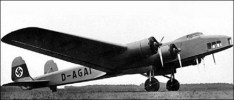
Dornier Do 191147 viewsAlong with the Junkers Ju 89, the Do 19 was developed as part of the "Ural Bomber" program championed by Gen. Walther Wever who forsaw the need for long range strategic bombing capability. When Gen. Wever was killed in April of 1936, the goal of a strategic bombing capability died with him. On April 29, 1937, the Ural-Bomber bomber program was cancelled by Kesselring in spite of protests. Kesselring felt the production and development resources would be better used to develop and build tactical bombers such as the Do 17 and He 111. This philosophy would later haunt and severely handicap the Luftwaffes ability to strike at Russia's production capabilities.Sep 18, 2006
|
|
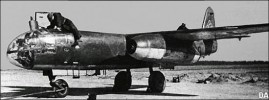
Arado Ar 2401070 viewsThe German Arado 234 was the very first purpose-built jet bomber. While the Ar-234 had very little influence on the outcome of World War II, being much too late and too few in number, it had influence on later aircraft designs. The Ar-234B could be configured either as a bomber or reconnaissance aircraft. It weighed about 5.2 tonnes (11,464 pounds) empty, and about 8.43 tonnes (18,850 pounds) fully loaded. Maximum bomb load was about 1.5 tonnes, carried externally. When used as a reconnaissance aircraft, the AR-234B carried a pair of 300 liter (79 US gallon) drop tanks in place of the bombs.
The powerplants consisted of a pair of Junkers Jumo 004B turbojets, with 900 kilograms (1,980 pounds) thrust each. Maximum speed without bombs or drop tanks was 740 KPH (460 MPH) at 6,100 meters (20,000 feet), but the speed dropped to as low as 660 KPH (410 MPH) with external loads. The prototypes had actually been a good 30 KPH faster than the Ar-234B, due to the more slender fuselage allowed by the lack of landing gear. Tricycle landing gear was fitted. As the Ar-234 landed at high speed, it had a drag chute as standard equipment; it was one of the first aircraft to do so. The rounded nose of the aircraft was covered with plexiglas, giving the pilot an excellent view to the front, but no view to the back except through a periscope. The periscope, which was not provided in the Ar-234 prototypes, also served as a sight for dive-bombing attacks. As a bomber, the Ar-234 was something of a failure. It could not carry enough of a bombload to match the destructive power of the big heavy bombers that were smashing the Reich. However, as a reconnaissance aircraft it proved able to bring back intelligence from airspace denied to prop-driven aircraft.
There were also a number of innovations in the Ar-234 that would be seen in later aircraft. Sep 18, 2006
|
|
|
 |

|